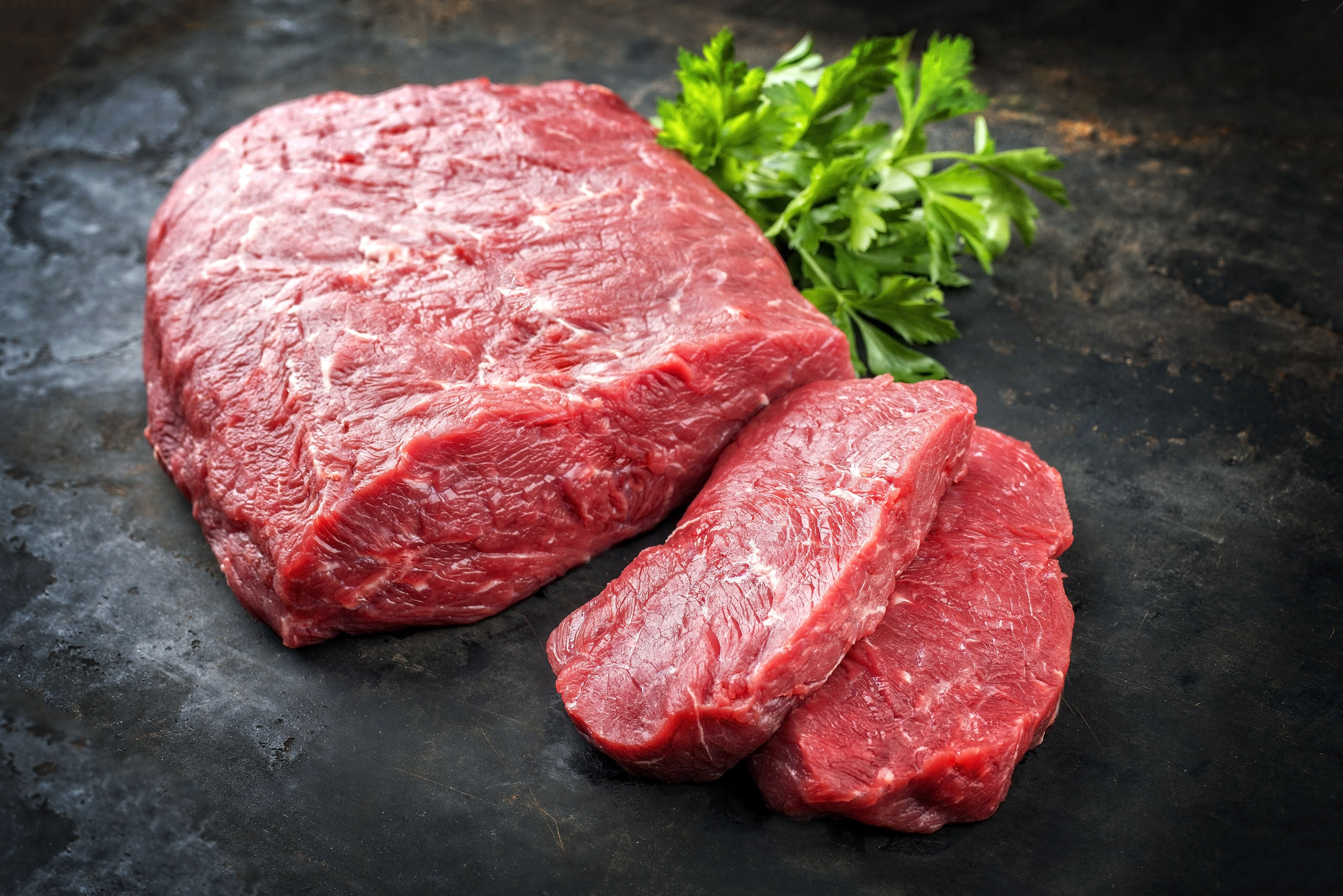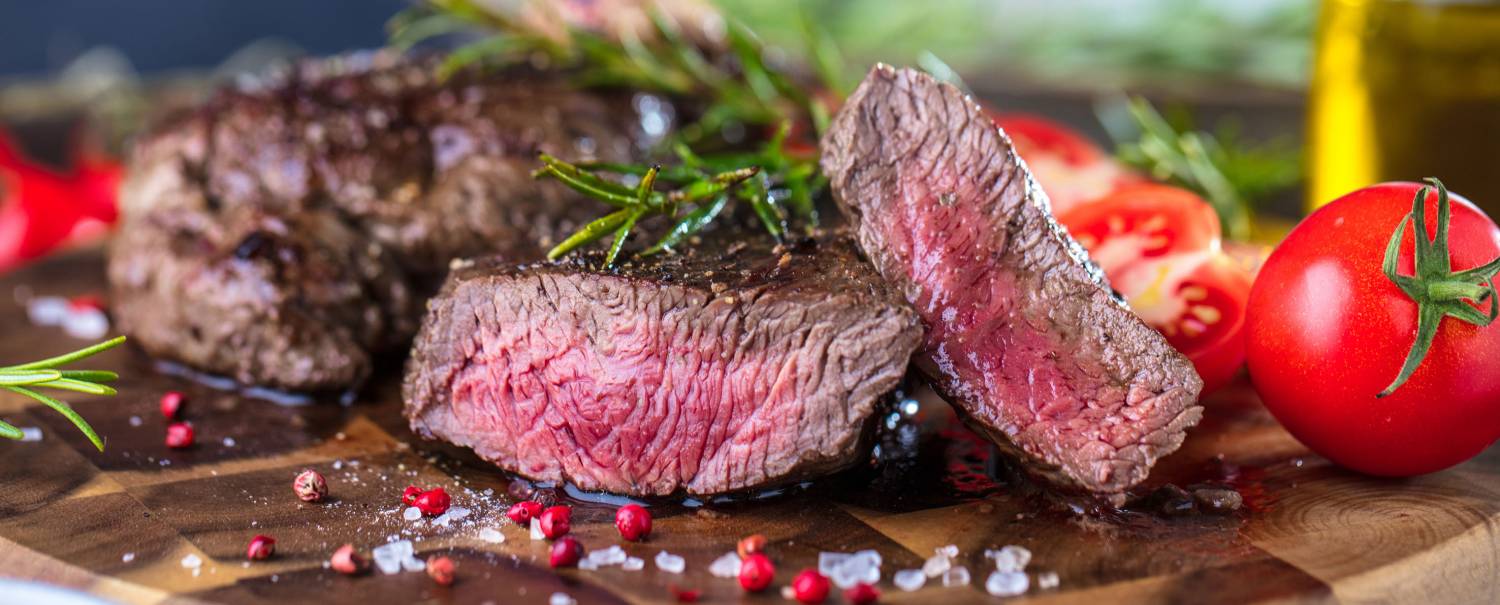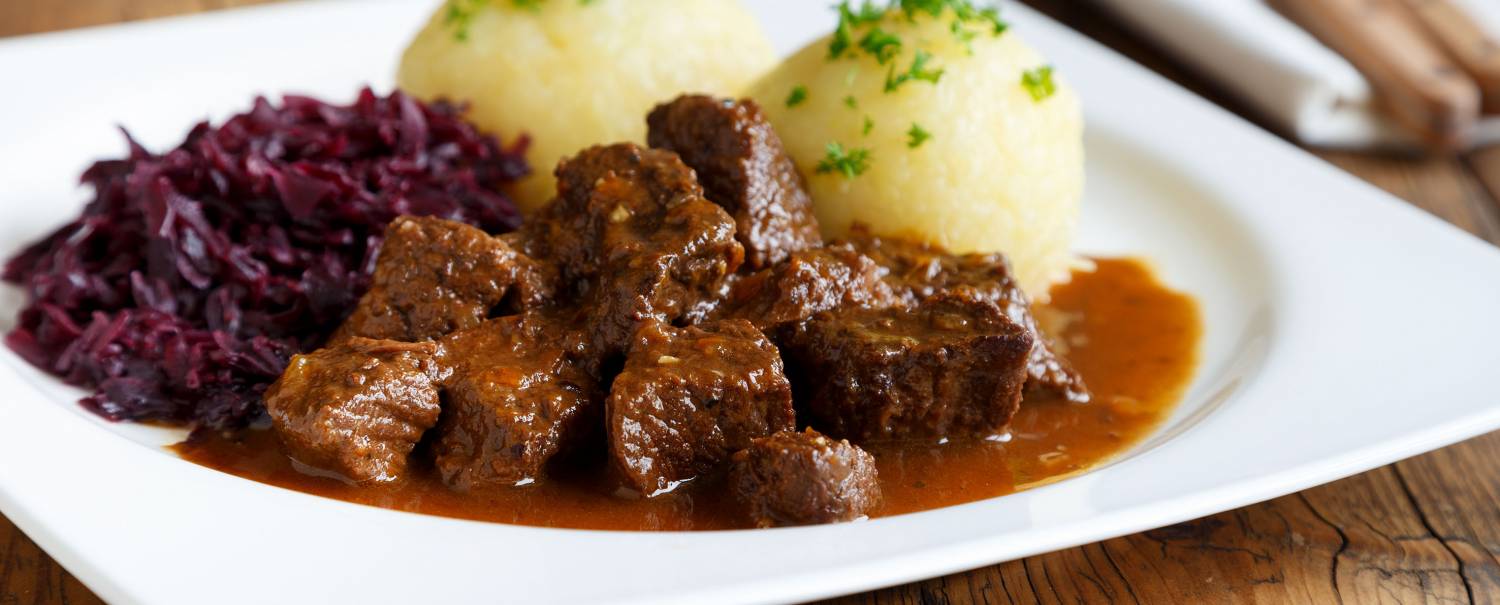Beef
Meat is a basic part of a varied and balanced diet, although the termincludes products with different nutritional and organoleptic characteristics.
fresh food
Share

From a nutritional point of view, the differences between differenttypes of meat basically lies in their fat content; from an organoleptic pointof view the differences are greater as, among other things, it changes in colour,flavour and even in its culinary methods of use.
Meats grouped under the heading of beef include veal, cow, ox and bull. Animals of a greater age tend to be used for more specific recipes, such as ox tail.
Types of beef's cuts
Cuts of beef can be grouped into various commercial categories, which you need to know in order to establish their quality and culinary uses:
· Extra Category - Tenderloin
- Sirloin
- Prime Rib
· Category 1 A - Chuck
- Rump
- Thick flack
- Eye of Round
- Silverslide
- Topside
- Rump
· Category 1 B - Chuck
- Shoulder
- Tip Steak
- Heel of Round
· Category 2ª - Blade
- Plate
- Foreshank
- Shank
- Bavette
· Category 3ª - Neck
- Brisket
- Rib
- Flank
- Tail

The veal in Spain is of exceptional quality and carries a Protected Geographical Indication, among which veal from Galicia, Asturias, Extremadura, Navarra and the Catalan Pyrenees can be found.
How to choose beef?
When choosing beef, the age and the type of animal can also be deciding factors:
· Veal: an animal that is between 8 and 12 months old and which has been reared onits mother’s milk, although this can be supplemented with grain and grass. Themeat has a light pink colour and is very tender. It has a very low fat content.
· Yearling: an animal that is less than 2 years old, around 12 to 24 months of age.
· Bullock or heifer: an animal that is between 2 and 4 years old.
· Fattened: a castrated male that is less than 4 years old.
· Ox: a castrated male that is over 4 years old.
· Cow: a female that is over 4 years old.
· Bull: the male version of the cow, intended for bullfighting.
From a nutritional point of view, veal, like other meats, is an important source of protein with high biological value. Apart from being an important source of minerals such as iron, which contributes to the creation of red blood cells; potassium which aids good muscle function; and zinc and phosphorus, which are important for bone maintenance.
As regards vitamin content, it is a source of the B group, such as vitamin B12, which is only present in its natural form in animal products, vitamin B6, and it has a high content of niacin and riboflavin. All these help to regulate the function of the nervous system and to reduce tiredness and fatigue.

How to prepare meet before cooking?
Buying veal from authorised establishments will fully guarantee optimal conditions of health-hygiene before and after slaughter. Once home, meat will keep perfectly well for 24 to 48 hours in the fridge as long as it is well covered and kept in an appropriate container. It is advisable to remove it from the fridge half an hour before cooking so that it reaches an ambient temperature, because if it is very cold it may become dry when cooked.
Receips to enjoy beef
There are several dishes around the world cooked with beef.
Chateaubriand is a dish that owes itsname to the French author who wrote The nature of Christianity, and it consists of a thick steak cut fromthe central part of the sirloin. It is prepared on a griddle andgenerally served with a sauce and a side dish of potatoes
Rosbif originates from the English words roast beef, a dish which generally uses a piece of prime rib, which may be tied before roasting in order to maintain its pink colour and so that it releases a pink juice when pricked. The meat in this dish should be well cooked on the outside and be slightly rare on the inside, so that it releases a pink juice when it is pricked. The best roast beef is normally made with veal and it will be juicier if the piece of meat is less than two kilos in weight.
Veal steaks with Port, mustard and parsley sauce
Ingredients
- 6 thick flank
- Topside or rump steaks
- 5 tablespoons of oil
- 5 tablespoons of Port
- 1 tablespoon of chopped parsley
- 2 teaspoons of mustard
- Salt
To prepare
- Heat the oil in a frying pan, season and fry the steaks (It is advisable to turn them over using tongs so that they are not pricked).
- Place them on the serving dish.
- Remove a little of the oil from the frying pan and add the Port and the mustard.
- Mix well and let it boil for a few minutes.
- Add the parsley and pour the sauce over the steaks.
- Serve immediately accompanied with mashed or fried potatoes, etc.






